As an antique collector, you should know that there is hardly anything that won’t sell at your local antique store or pawn shop, provided that it’s old enough. These articles can be as big as a Hoosier cabinet and small as a miniature sewing machine.
If you have an antique miniature sewing machine, you can very well consider it a sitting pile of cash. Even as a collector, you must know how to be able to date and identify an antique miniature sewing machine in case you ever stumble upon one.
With a convoluted yet mildly intriguing history, this particular antiquity is in a league of its own. Considered a necessity in the 1900s, you may find one of these sewing machines resting in your grandmother’s storage shed, collecting dust.
But should you take the sewing machine out and brush off the dust balls? Would the money it’d go for even be worth the effort? Most importantly, how can you date and identify your machine to check if it is an antique? That’s precisely what we shall talk about in this article.
Table of Contents
What Is an Antique Miniature Sewing Machine?
As you may have guessed, these are the smaller versions of normal-sized sewing machines. Back in the day, companies would release smaller models and toys designed exactly after their larger counterparts.
Can Miniature Sewing Machines Sew?
Contrary to what many people think, a small sewing machine isn’t a model or a toy for children. Even though those were introduced among the masses as a tool to teach young children, a small sewing machine, on the other hand, is an actual working piece.
Even back then, companies were surprisingly able to fit almost all the parts of an actual sewing machine into a substantially smaller body. This meant that even though it didn’t run on electricity, it could be used perfectly fine with the crankshaft it came with.
Why Would People Buy Miniature Machines Instead of Larger Ones?
The most important reason for this was probably that these were highly portable. This was further bolstered by the fact that these miniature machines could run without any power, making them perfect for use when traveling. These also proved to be a particular hit during the World War era.
Even though these weren’t meant to stitch complex pieces of clothing, they could prove to be highly resourceful pieces of luggage when on the go. Simple fabric and stitch tears could be easily sewn up by these, with minimal hassle and without occupying much space.
Sewing Machine History: The Wars for Patency
For a harmless object, you’d be surprised to know that its history is filled with countless court battles spanning multiple continents. Regardless of its somewhat poor start, its creators knew the potential behind this invention and refused to let someone else hog all the riches.
When Was the Sewing Machine Invented?
In 1790, an ingenious Englishman called Thomas Saint came up with the design of the world’s first sewing machine. The design he patented was a device powered by a hand crank and could be used with leather and canvas.
Unfortunately, his design fell short at the patent stage, and he could never see the light of day. This probably owed itself to the patent’s poor advertising by Thomas Saint.
Improvements It Received Over the Years
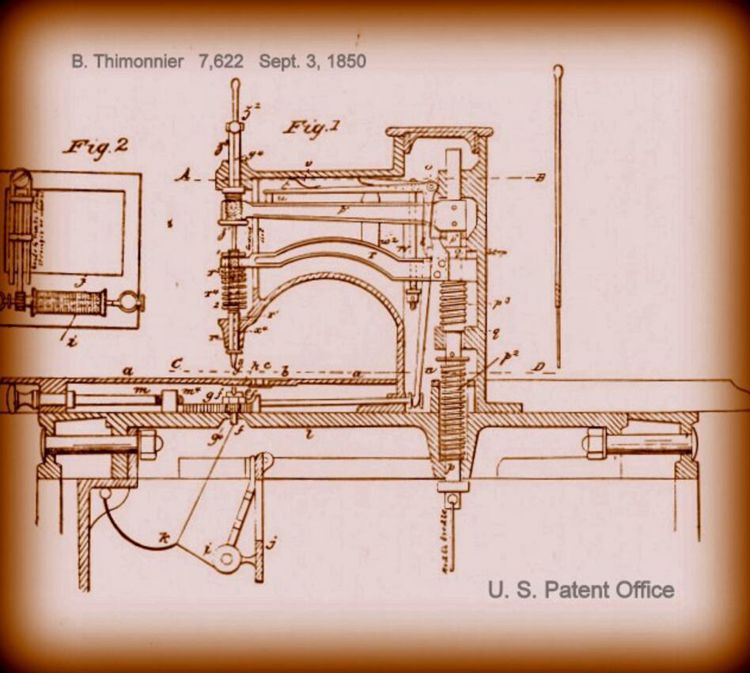
The efforts of Thomas Saint weren’t in vain. From 1804 to 1842, several European inventors tried their hand at the sewing machine design, working on and improving the original patent.
The first-ever working model of the sewing machine was introduced to the world in 1829. Barthélemy Thimonnier, a French inventor, made this possible with the help of Auguste Ferrand, a mining engineer. However, despite further improvements, Barthélemy Thimonnier’s machine did not gain much popularity.
Wrestling For Patency
In 1844, John Fisher took some of the best ideas of every sewing machine design at the time and merged them into a single new one. But due to his failure to file the patent properly, his work could never be finished.
Within a year, Elias Howe, another European inventor, copied John’s model. The only difference was the vertical fabric addition in Howe’s Machine. Unlike John, Howe successfully filed for a patent for his machine, which would prove highly beneficial.
Entering the scene six years later was Isaac Singer, who used Howe’s design and started making machines under the Singer brand name. Fortunately for Howe, he won the court case and his patent design. Consequently, for every Singer machine sold, Howe would earn $1.5.
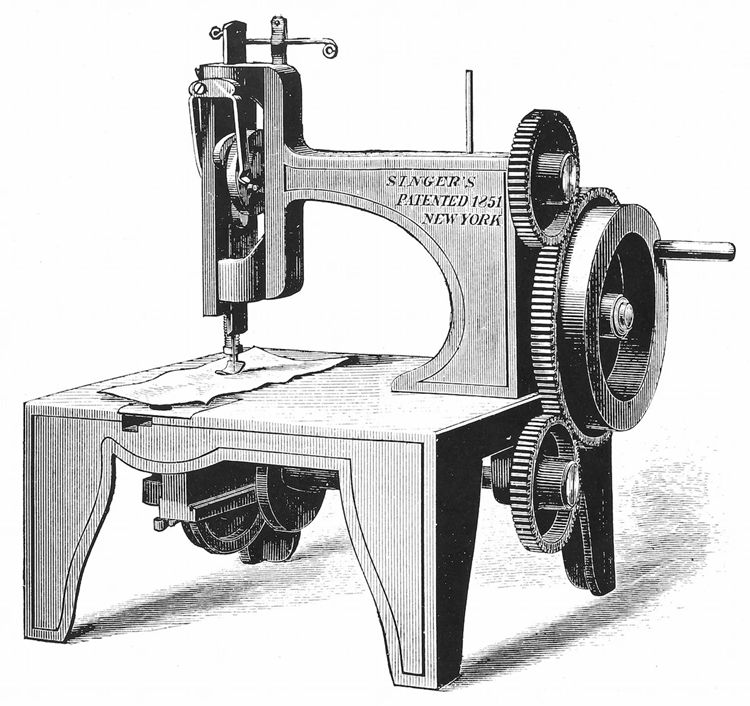
Creation Of the Sewing Machine Conglomerate
After five years of such skirmishes and fights in courts over the intellectual property rights of sewing machines, the top 4 brands in America joined hands and formed a conglomerate in 1887. This included both the designs of Singer and Howe.
This somewhat peaceful era lasted until 1887, when the patent ended. Any new sewing machine company that used a similar design in this period would have to pay the conglomerate a hefty sum of $15 per machine sold.
The Singer came out on top after this period, owing to the improved design of their new machines and the fortune they spent on the advertisement of their products. By 1918, almost every industrial or home-based sewing machine in America had the Singer brand name.
What Sewing Machine Brands Should You Look Out For?
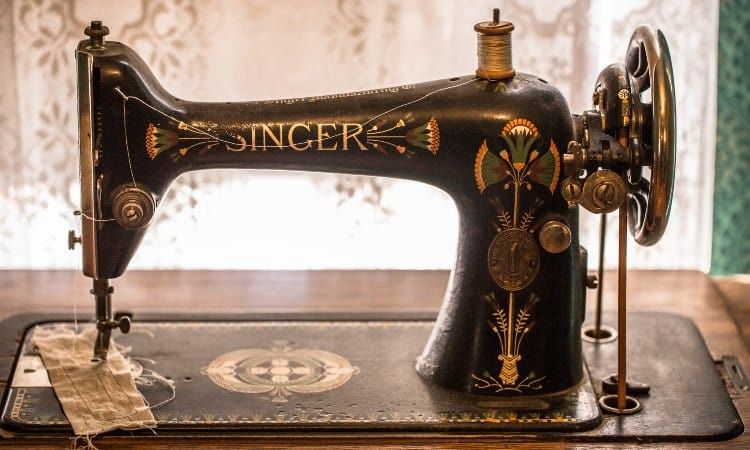
There have been countless sewing machine brands over the years. Some of these are still around today, but other companies may have closed down a long time ago. It’s important to know what brand your miniature sewing machine belongs to.
American Brands
- Singer
- Kenmore
- White
- National Sewing Machine Company
As you may have guessed, Singer machines have the highest price tag among all of these brands. Unfortunately, apart from Singer, you’ll find that all three companies have shut down a long time ago, due to various reasons.
European Brands
- Bernia
- Pfaff
These two European brands can still fetch you a good sum of money. Still popular to this day owing to their sturdy craftsmanship, these are among the manufacturers that still make some of the highest-quality sewing machines.
Japanese Brands
- Brother
- Janome
These two brands kicked off after World War II when Japan. Brother is still considered to be one of the largest sewing machine brands of today. The fact after the 1950s, many of the Kenmore models were made by Janome shows how expansive the Japanese sewing machine industry is.
Is It an Antique or A Vintage Sewing Machine?
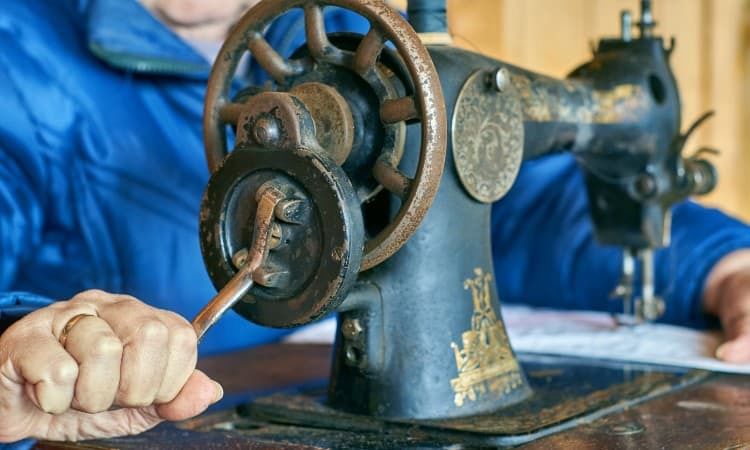
As a good rule of thumb, any sewing machine manufactured before the 1900s can be considered an antique. Such articles are rarer and tend to fetch a higher amount of sum.
Vintage sewing machines, on the other hand, consist of all the ones made from the 1900s until the 1970s. After 1970, most of the devices produced used an in-built circuit board. Hence collectors classify such articles under the current category.
Antique machines can be easily recognized owing to their exclusive stitching pattern and the fact that they use a treadle.
Zig-Zag Stitch
While most antique sewing machines couldn’t create patterned stitches, this changed in the 1960s. Pieces like Kenmore 30 Stitch, Singer 401, and 403A can be dated back to this decade due to their unique zig-zag stitching pattern. These machines made use of hook systems or flat cams that allowed the zig-zag pattern.
Straight Stitch
The standard stitch pattern on almost every antique sewing machine you find will be the straight stitch. While some may consider this to be a very limiting feature, it wasn’t without its advantages.
The fact that it didn’t make use of any complex parts meant that these antique machines were extremely durable and long-lasting. The straight stitch could sew through fabrics thicker than today’s machines can, throwing light on just how well-crafted these were.
Sewing Machines With Treadle
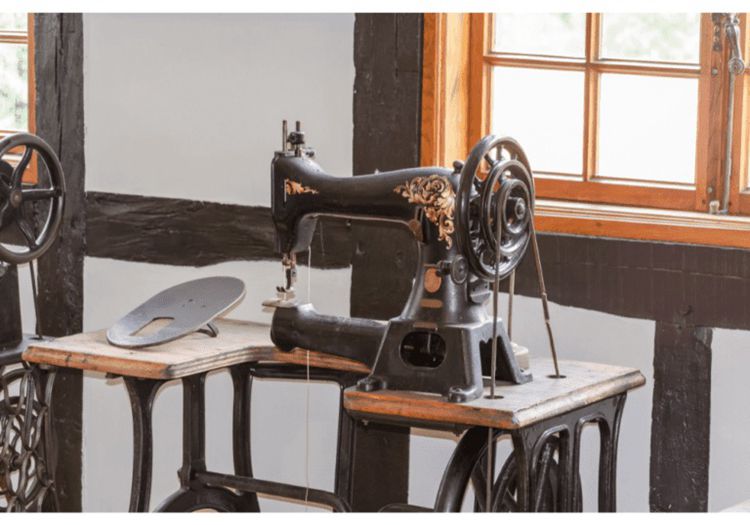
A treadle is a food peddle that allows for hand-free flywheel rotation. This addition meant that the crankshaft could be removed, allowing the hands to focus entirely on the stitching work.
While a treadle was more common on regular-sized models than miniature machines, it should help differentiate your tiny sewing machine from its larger counterpart.
First introduced in a sewing machine way back in 1830, the treadle sewing machines were the ones you’d find in almost every American home before the introduction of residential electricity.
Identification Of an Antique Miniature Sewing Machine
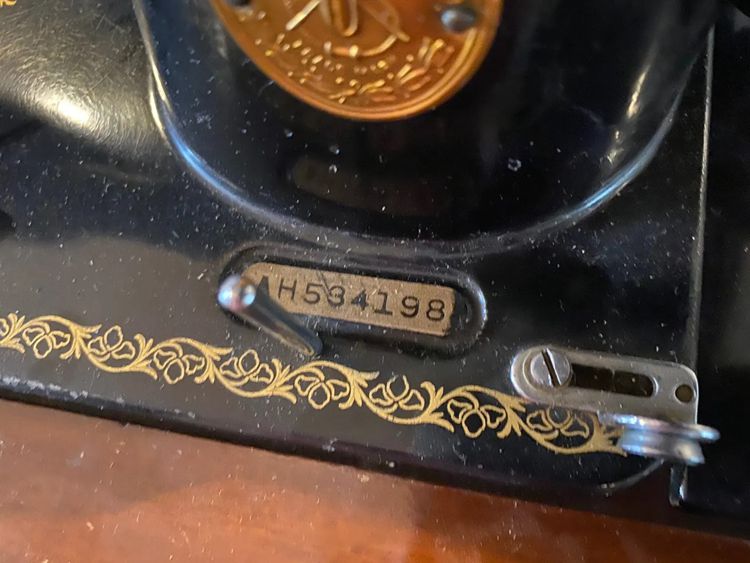
Only an authentic miniature sewing machine can be expected to be sold. Machines of poor quality or restored models will face drastically reduced demands and selling prices. You must recognize the make and model of your miniature sewing machine if you expect to sell it.
Brand Marking
Every machine brand would ornate their machine with a logo or a marking of their brand. The first course of action would be to locate and identify this insignia.
The logo would be printed or bolted onto the body of many machines. If you can recognize the brand by looking at the logo, you’re already one step closer to identifying your device.
However, if the brand marking is missing or damaged, it will significantly lower the price and require proper restoration techniques to reveal the brand.
Serial Number
Once you have identified the brand, you should look for a serial number. This will tell you the exact year of make and the model of your miniature sewing machine.
A serial number may be printed or bolted on the throat plate, right side, and even underneath the body. This works exceptionally well for Singer’s machines, as they have an extensive online database on all the models to date.
You may find that some brands did not add any serial number to their machines. This makes them extremely difficult to recognize, and may even require paid identification by an expert.
Brand Specific Special Features
Most of the brands we discussed above have unique and distinguishing features that can be immensely helpful for the identification of your small sewing machine.
Singer, the most famous American sewing machine brand, can be easily recognizable due to its distinct design and look. White machines have a standout feature of wooden tables with furniture-like carvings.
Some machines by the Japanese brand Brother had cute stitching options, like a pattern that would stitch like a goose. The National Stitchwell brand’s toy machines were usually black with the Stitchwell inscribed on their body.
Muller brand usually made machines with hand cranks that looked similar to Singer. However, their devices were primarily black and incorporated a much simpler design. On the other hand, Essex machines would always come with a carrying case and a wooden base.
Treadles And Sewing Pattern
As mentioned above, a treadle came with a regular-sized sewing machine. This can help you differentiate if your particular machine is a miniature or not.
The 1960s saw increased stitching patterns, especially on some of the Singer models. If you can happen to find an antique machine in working condition, the stitch types it can produce can roughly tell you its age.
Quality Of Construction
The body of the sewing machine would see the use of different materials over the years. This is especially important for the wooden base, which would incorporate different types of wood.
Successfully recognizing these materials and linking them to the year of manufacturing and the company that used such materials can massively help you in their identification. However, this method is more suited for professionals due to its technicality and the knowledge of history it demands.
Dating Of a Sewing Machine
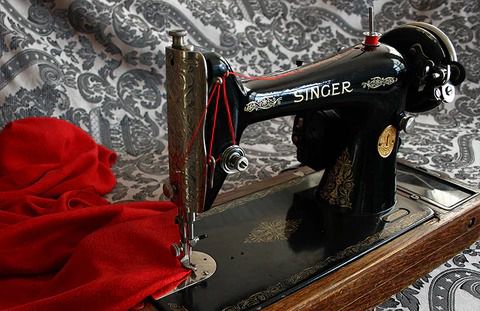
There are several methods to date your sewing machine. The most straightforward ones are these:
Online Database
This works particularly well for Singer Machines. Locate the serial number on your machine and compare it with the online database provided by the singer. It’ll give you all the information you need about your model.
Reverse Image Search
Google provides users with a way to search using an image. Plug in a picture of your machine and see which results online resemble your sewing machine the most.
Owner’s Manual
If you’re machine still has an owner’s manual, then by far, the easiest method would be to go through it and see its year of make and model.
Official Appraisal
If none of those methods mentioned above work, you can take your machine to someone well-versed in the history and identification of antique sewing machines.
Alternatively, you can post a picture online. People on platforms like Facebook and Reddit will come to your aid in dating your sewing machine.
Value Guide for Miniature Sewing Machines
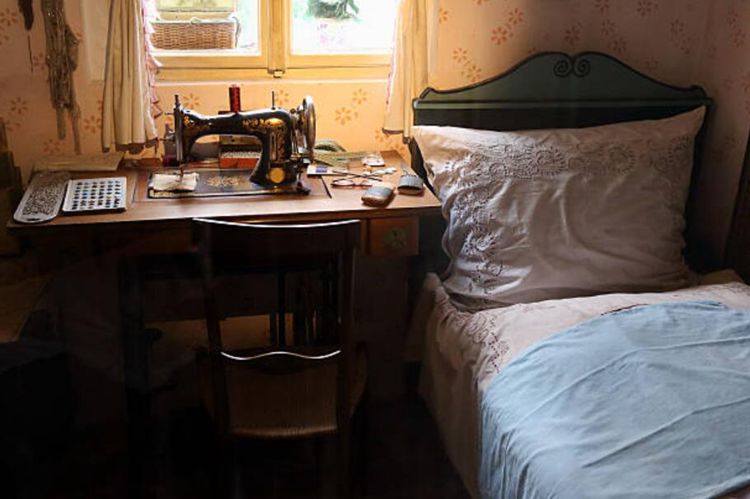
The price your miniature sewing machine will fetch depends on several factors. As a rule of thumb, the older, rarer, and more well-conditioned your machine is, the higher it will sell for.
Year Of Manufacture
The most important thing when identifying an antique miniature sewing machine is to get a gauge on its year of manufacturing. This can be quickly done by tallying the serial number, an owner’s manual, or a stamped year of production.
Older machines sell for more money, with machines before the 1900s going for as high as $2000. Early 1900s machines can fetch you around $500-800 in the market.
Operation
Regardless of its condition, you should try to check if the machine you have can run or not. Machines in working conditions may tend to go for a slightly higher sum of money.
Try putting the machine through a simple stitch on any piece of cloth. If the stitch pattern is intact, you’ve got on your hands a relic of the past that still functions. Please don’t be shy to ask for a higher price for it.
Physical condition
As you may have guessed, the better the condition of your machine, the higher you can sell it. Try looking for any dents, chips, stains, or rust.
If there is any sort of dust or grime on your machine, that can be cleaned with a wet cloth. Be careful not to damage any printing on the device. Household detergents are a definite no-go if you want the machine to look as original as possible.
Rarity
Some sewing machines are challenging to come by and are considered collector’s items. If you are lucky enough to stumble upon one piece, expect upwards of 500 dollars for it.
A Singer machine, if it’s a rarer model, will fetch you nearly a thousand dollars. That’s why it’s essential to identify the make and model of your miniature sewing machine.
Type of Sewing Machine
Of the two major types of sewing machines, the domestic models are higher-priced as compared to more heavy-duty industrial ones.
Examples of Miniature Sewing Machines Auctioned
There are multiple examples of antique miniature sewing machines sold at exorbitant prices, all because of the value collectors give to them.
Singer Featherweight
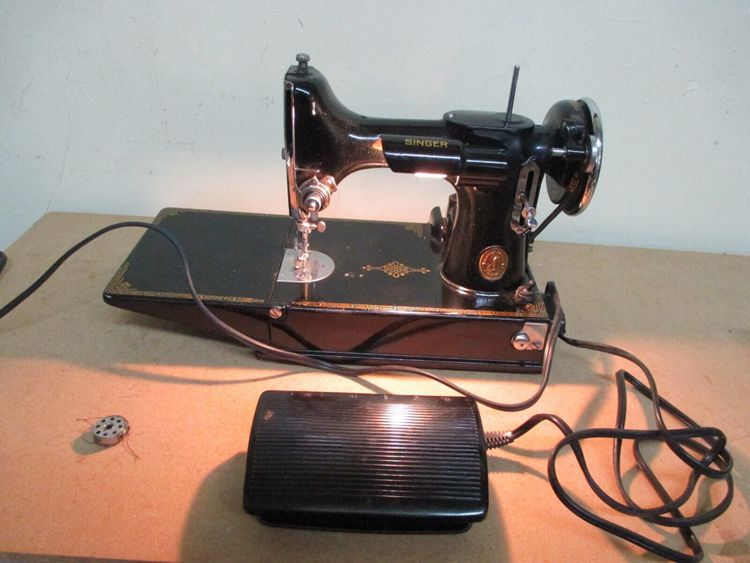
This specific Singer model was prevalent back in the day. Due to the compact and easy-to-use design, beginners preferred to learn sewing on it.
It has a lightweight Aluminum frame and comes in a portable carrying case. The Singer made good use of the compactness of this machine by adding the carrying case, adding to the ease and portability.
The Featherweight was manufactured between 1933 to 1968 and went for $200-$400 in the market. This eBay listing has this particular model for around $300.
Singer Sewhandy Model 20
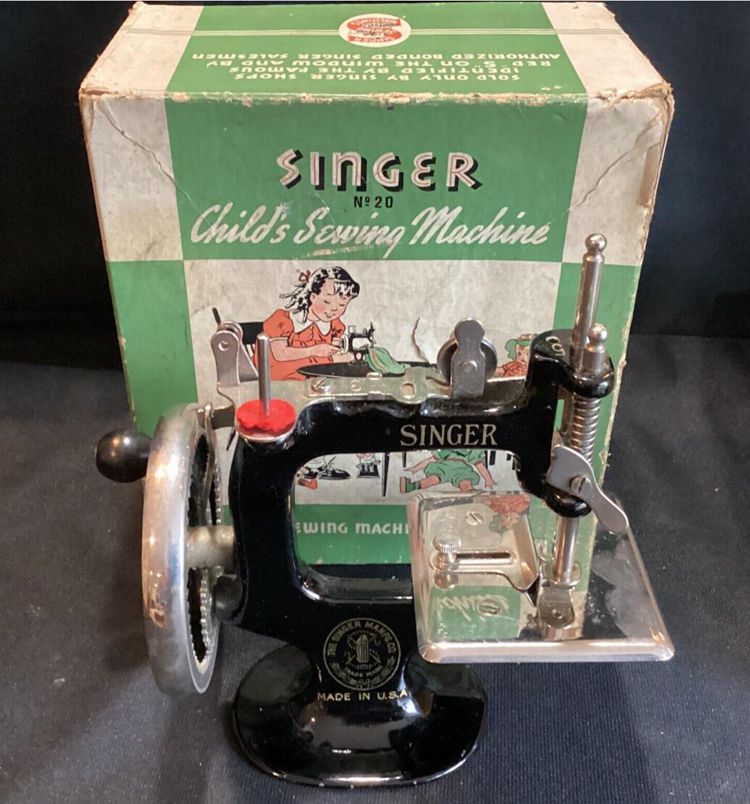
The Singer Sewhandy Model 20, also termed a “Midget Model” by Singer, was primarily manufactured for college girls. Don’t let its tiny size fool you. It can still allow for small mends and repairs in clothing, making it perfect for on-the-go sewing.
It has a carrying case, so be on the lookout for one if you buy this model. The small clamp below it allowed firm attachment to any table or surface.
Produced in the 1910s, expect this model to go in the market for around $120 to $180 in the antique market. A Sewhandy Model 20 in immaculate condition was spotted on eBay for $150.
Conclusion
When it comes to antique miniature sewing machines, it is essential to know their convoluted history and the various brands that rose to stardom and then died out.
Identification and dating of a sewing machine are essential for its pricing. We talked about all the techniques you can incorporate to find the make and model of your particular machine.
This brings us to the end of this guide. Thank you for reading.
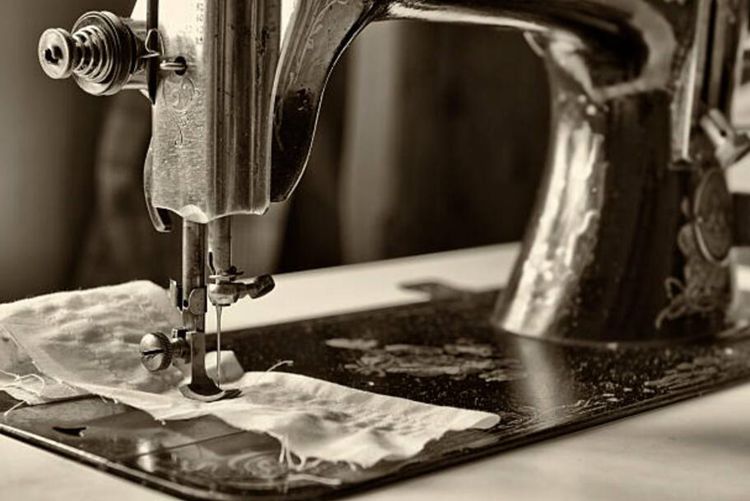
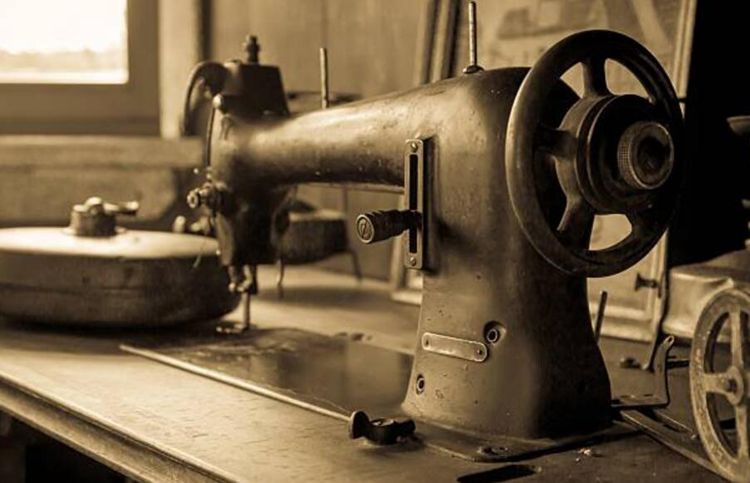






![Vintage Schwinn Bikes: [Types, Identification, and Values]](https://www.txantiquemall.com/wp-content/uploads/2022/05/5.-Schwinn-1967-Ramshorn-Fastback-Stingray-Sky-Blue-vtg-600x450.jpg)
